Last Updated on August 5, 2021
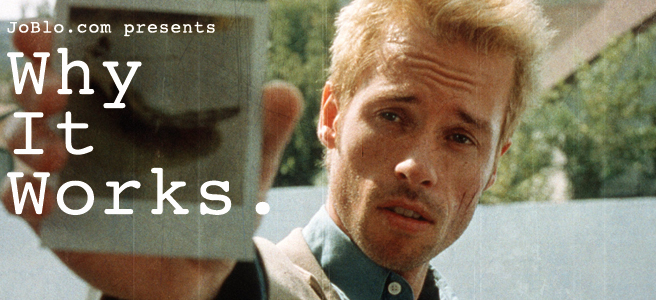 Why It Works is an ongoing column which breaks down some of the most acclaimed films in history and explores what makes them so iconic, groundbreaking, and memorable.
Why It Works is an ongoing column which breaks down some of the most acclaimed films in history and explores what makes them so iconic, groundbreaking, and memorable.
****SPOILERS AHEAD****
For some reason, memory loss played a prominent role in several films around the turn of the century: THE BOURNE IDENTITY, MULHOLLAND DR., 50 FIRST DATES, X-MEN, VANILLA SKY, ETERNAL SUNSHINE OF THE SPOTLESS MIND, and, of course, MEMENTO. Some of these employed nonlinear storytelling to drive home the feeling of disorientation, but MEMENTO took it to the next level. The scenes in color move backward, the scenes in black and white move forward, and they link up at the end. Amazingly, this risky move paid off, launching the career of director Christopher Nolan and cementing the film's place in history: Here's why it works:
WHY WE LIKE THE CHARACTERS:
By the nature of his condition, Leonard Shelby is something of a blank slate. He's not particularly charming, three-dimensional, or memorable. His short term memory loss, however, like any protagonist's disability, makes him the underdog. We're all suckers for the little guy, especially when he is determined to succeed despite his setback- John G raped and killed his wife, and he is hellbent on revenge. Leonard's objective is what keeps the character and the story from becoming too existential- yes, we have this memory loss enigma, but we also have a classic revenge story to cling to. Also, half the cast of THE MATRIX shows up to keep things interesting.
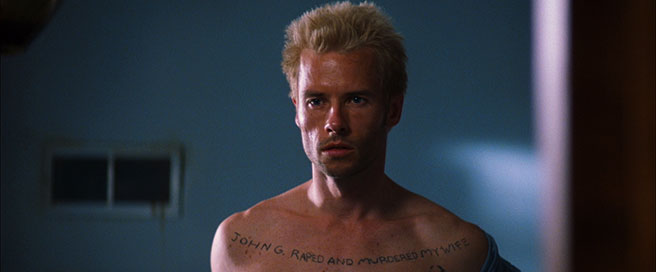 My chest tattoos are mostly to help me remember which Mara sister is which.
My chest tattoos are mostly to help me remember which Mara sister is which.
WHY WE CARE:
While the revenge tale is enough to grab our attention, the structure and mystery of the film are what keep us early on from writing MEMENTO off as more of the same. In the opening moments, a Polaroid develops in reverse, Leonard kills Joey Pants, a black and white scene shows Leonard trying to figure out where he is, and then Teddy is back, his shit-eating grin not yet blown off. The simultaneous forward/backward structure isn't so complicated as to take us out of the story (particularly since the black and white scenes usually play more as quick chapter breaks), but piecing everything together while the story unfolds keeps us on our toes. Almost every color scene raises a new question, answers an existing question, and adds a new piece to the grand puzzle, so we find ourselves nestled between confusion and intrigue quite nicely.
 This should make my brain hurt less. It doesn't. (chart by Dr Steve Aprahamian)
This should make my brain hurt less. It doesn't. (chart by Dr Steve Aprahamian)
WHY WE'RE SATISFIED:
Okay, look, any movie can tell a story out of order. So what? They lived happily ever after, some stuff with a monster went down, and once upon a time there was a princess. If there's one thing that makes MEMENTO's structure brilliant, it's the fact that the story is told in reverse and still has a twist ending (or, chronologically speaking, a twist middle). And the twist? It's a doozy. Sammy Jankis didn't have a wife; Leonard's wife survived the attack and only died when she gave him the final insulin exam Leonard attributes to Sammy. Even crazier, Leonard killed the real attacker over a year ago and has been giving himself new John G's ever since simply to give his life purpose (it's not even clear whether Jimmy and Teddy are the only victims of this or if Leonard has been on a John G killing spree). Sure, the ending can suffer from the "it was all a dream" feeling of disappointment, where you ask yourself what the point of the story was, but that's where the philosophy of it all comes in- we should feel disappointed when a character lets us down, as it reminds us why we choose to be good.
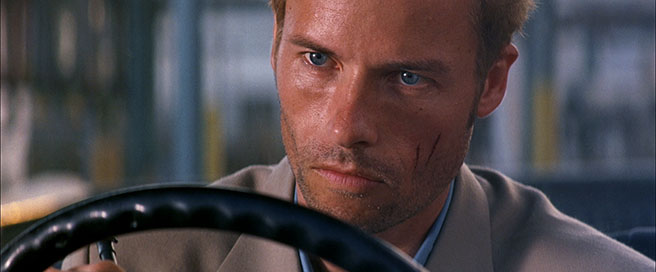 "We all lie to ourselves to be happy."
"We all lie to ourselves to be happy."
WHY WE REMEMBER:
MEMENTO is a film about the search for truth and the lies we tell ourselves in the process. You know when someone tells you all the reasons they can't do something, and all you can think is how everything they're saying is bullshit? We tell ourselves stories to justify the things we do and excuse the things we don't do. Enter Leonard Shelby, an extreme version of this personified. Leonard claims it doesn't matter that he won't remember killing John G, so long as his wife is avenged. When we realize John G is not only already dead but also didn't kill his wife, we see that Leonard is simply creating his own story- fabricating a new reality to give his life a purpose and telling himself lies to keep his fiction alive.
Finally, MEMENTO doesn't need to rely on the twist or the structure to succeed as a quality film. Jonathan and Christopher Nolan deliver a work of edgy, modern noir with enough action and levity to hold the audience ("Okay, so what am I doing? Oh, I'm chasing this guy. No, he's chasing me."), and precise editing, an engrossing score, and a solid cast keep the story from ever becoming too slow or disorienting. Christopher Nolan has directed eight studio features, and seven of them are in the top 110 of IMDB's Top 250 list (sorry, INSOMNIA). With only the independent FOLLOWING under his belt, it's no small feat that the director was able to deliver such a masterpiece with his first studio film.
Now… where was I?
Thoughts? What else worked for you? What didn't? Strike back below!
If you have any movies you'd like to see put under the microscope, let us know below or send me an email at [email protected].



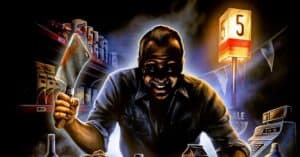

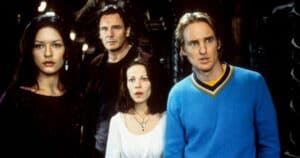

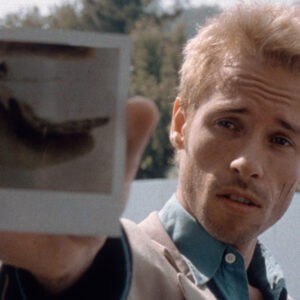

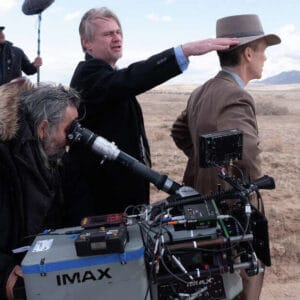
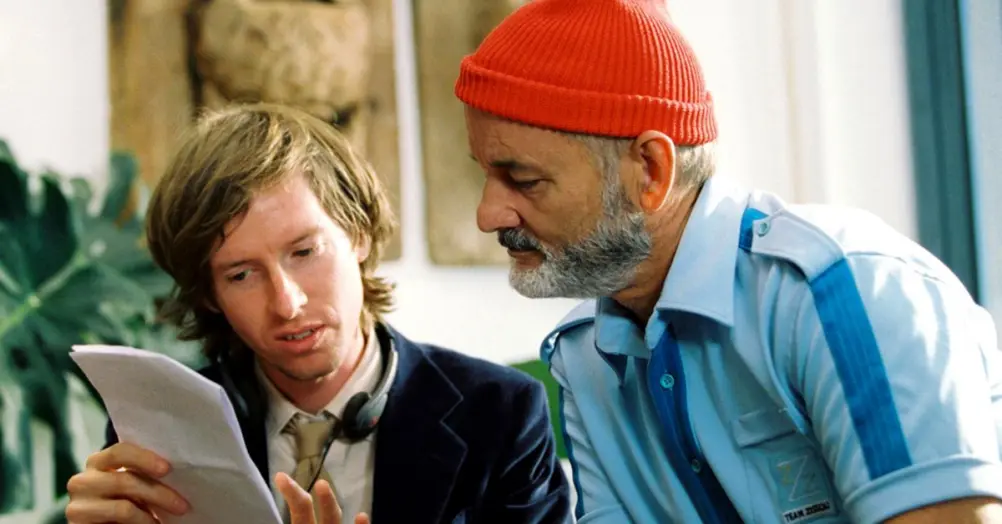
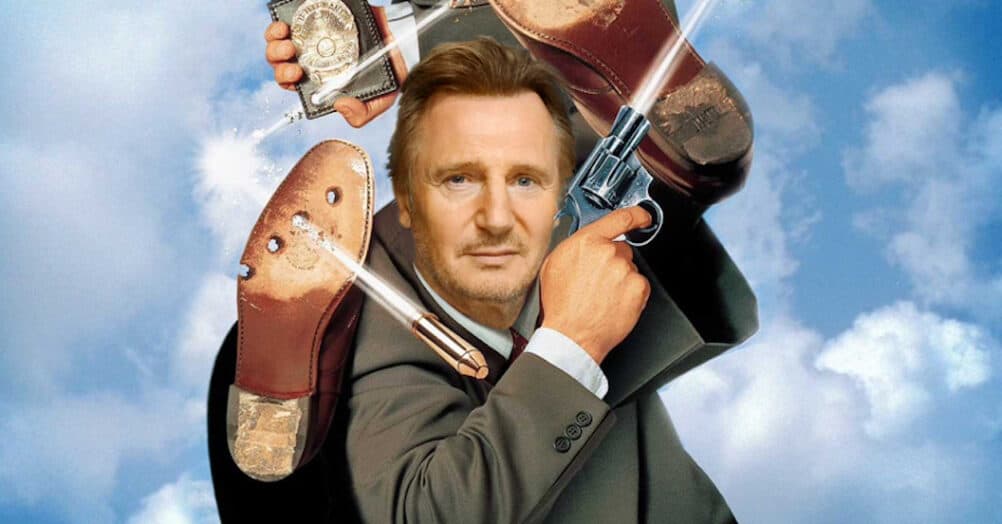





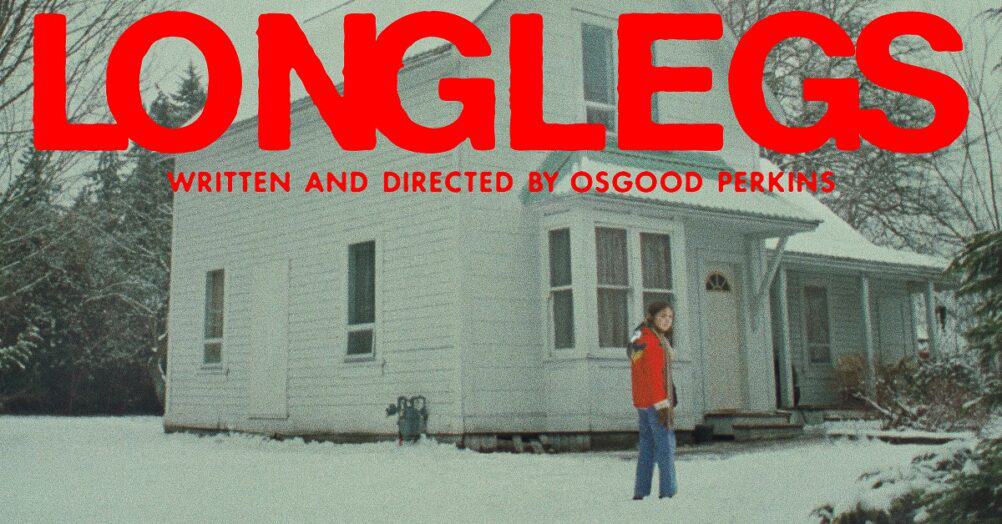
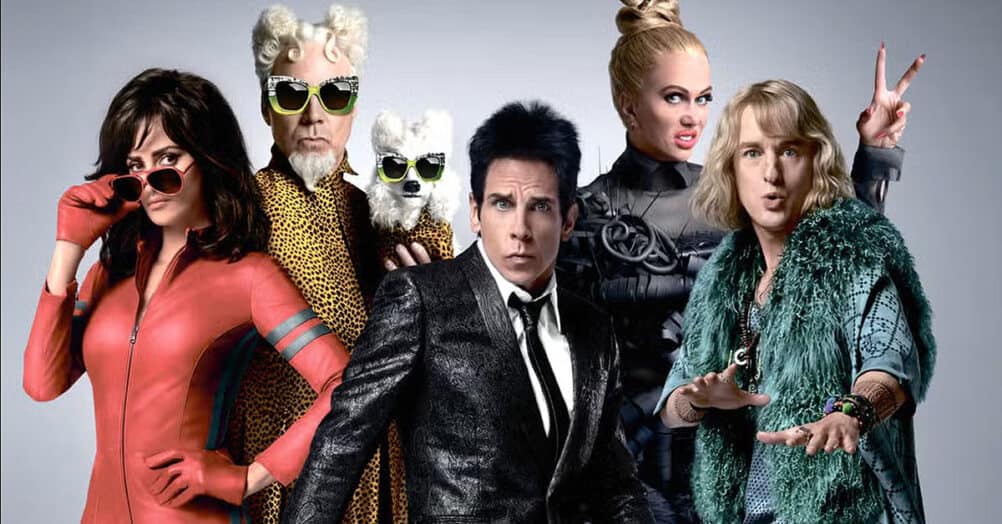

Follow the JOBLO MOVIE NETWORK
Follow us on YOUTUBE
Follow ARROW IN THE HEAD
Follow AITH on YOUTUBE